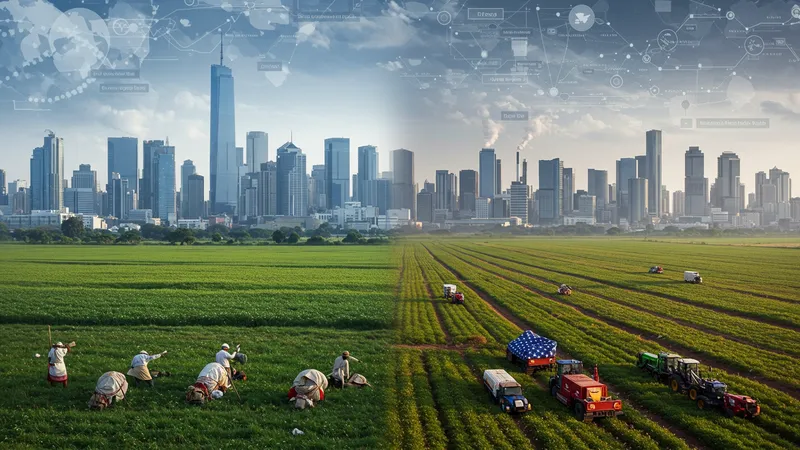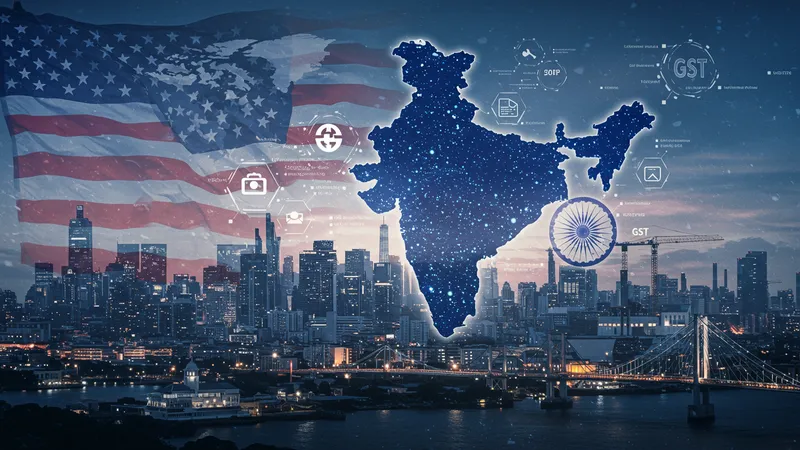

When comparing major economies like India and the United States in 2025, the focus naturally shifts to their scale, dynamics, and the evolving factors that shape global influence. This concept revolves around analyzing pivotal areas such as GDP growth, industrial frameworks, technology adoption, workforce demographics, and policy directions for both countries. By closely examining these components, observers can better understand how each nation is positioned on the international stage and the economic trends shaping their future potential.
Delving into the anticipated landscape of 2025, analysts examine key metrics such as production outputs, digital economy integration, export-import balances, and emerging sectors driving value in both India and the US. The comparison provides a multifaceted perspective, revealing both the strengths and challenges distinct to each nation while highlighting common ambitions, such as sustainability and innovation-led growth.

Comparing the growth rates of these nations, projections suggest that India’s gross domestic product may continue outpacing many advanced economies, including the US, driven by robust services and young demographics. However, the US retains substantial advantages through established infrastructure, high productivity, and world-leading technology sectors, offering resilience even during global disruptions.
Innovation is a central discussion point. The US has traditionally led in R&D investment, particularly in fields such as artificial intelligence and biotechnology. India, though rapidly scaling its innovation ecosystem, leverages strengths in software exports and digital services, making it a newfound powerhouse in tech-driven sectors, albeit with different market dynamics.
Demographic trends also create sharp contrasts. India’s median age provides a large and growing workforce, raising expectations of sustained economic contributions. In contrast, the US contends with a gradually aging population but offsets this with high labor productivity and immigration-fueled technical talent.
Both nations emphasize sustainability and green transitions, though approaches may diverge. US firms increasingly adopt advanced clean technologies, while India focuses on large-scale solar energy rollouts and affordable clean solutions suited for rapid urbanization.
In summary, analyzing these key factors sets the stage for a deeper dive into where each country’s economy could be heading in 2025—the next sections will unpack policies, productivity patterns, digital trends, and more. The deeper details reveal even more valuable insights ahead…
Across both nations, sectoral strengths influence the pace and trajectory of economic growth. India’s economy is propelled by services, particularly IT and business process outsourcing, which have transformed global business support landscapes. Manufacturing is targeted for expansion, with government initiatives seeking to boost domestic production. By contrast, the US continues to dominate in both high-value manufacturing and financial services—fields that command significant capital flows and set standards for the rest of the world.

Agriculture plays unique roles in each country. In the US, large-scale highly mechanized farming supports commodity exports, while in India, agriculture provides employment for a large portion of the population and increasingly leverages technology to improve output per hectare. These contrasting agricultural frameworks underscore the structural diversity between the two economies.
Energy is another differentiator. The US is a leading oil and natural gas producer, supporting its industrial strength and keeping input costs globally competitive. India, more reliant on imports, is accelerating investments in renewables like solar and wind. This drive is supported by ambitious national targets but also shaped by differing resource endowments.
Ultimately, the ability of each country to harness its sectoral strengths—whether through services, industry, or energy—will define the competitive landscape in 2025. The evolving mix of these drivers points toward heightened complexity and opportunity for both, further explored in the next section.
The technology sector is central to these economies, yet it functions differently in each context. The US is home to many of the world’s leading tech companies, from cloud computing giants to semiconductor manufacturers. This status has enabled rapid innovation and robust export earnings from intellectual property and high-tech devices.

India, however, has carved out a niche with globally respected IT service providers. The expansion of its digital economy, buoyed by mobile connectivity and entrepreneurial ventures, is creating impact across urban and rural settings. Workforce training in software development and digital skills is a priority, supporting sustained growth in this field.
Workforce considerations go beyond population size. The US workforce benefits from advanced vocational training, high educational attainment, and a steady influx of international expertise, supporting leadership in emerging tech fields. India’s vast young labor pool is its asset but requires ongoing investment in education and upskilling to fulfill its economic promise.
These divergent tech and workforce paths shape how each country harnesses innovation. Their ability to adapt and invest in talent development will be crucial for maintaining—or closing—gaps in competitiveness as 2025 approaches. Policy and business responses to these dynamics offer fascinating new dimensions, dissected further in the next page.
National policies shape everything from economic stability to growth potential. The US traditionally emphasizes free-market environments, fostering entrepreneurship and protecting intellectual property rights. Regulations focus on enabling innovation while balancing labor and environmental concerns. This approach sustains competitiveness across business cycles but faces new tests as global power dynamics evolve.

India’s policy environment, meanwhile, centers around accelerating manufacturing through initiatives like “Make in India,” expanding financial inclusion, and enhancing infrastructure via public and private partnership models. Regulatory reforms, such as the nationwide Goods and Services Tax (GST), aim to unify the domestic market and attract investment.
Trade policies also distinguish the two nations. The US often negotiates from a position of economic strength, setting standards in global trade agreements. India, as a growing voice in international forums, pursues agreements that support its export ambitions and protect domestic industries. The trajectory of these policies affects economic prospects up to 2025 and beyond.
Ultimately, policy agility and implementation capacity will determine which country best adapts to upcoming challenges and opportunities. The ongoing evolution of fiscal, trade, and social policies keeps both economies dynamic and responsive ahead of 2025; the interplay between these elements warrants a closer look at real-world economic outcomes.
Economic projections suggest that both nations will play crucial roles in shaping global growth over the next decade. The International Monetary Fund forecasts robust expansion for India relative to many peers, while the US maintains its position as the world’s largest individual economy by nominal GDP. These forecasts influence investment flows, corporate strategies, and policy decisions worldwide.

India is increasingly recognized for its contribution to the global technology workforce and as a driver of demand in the energy, consumer, and infrastructure sectors. The US continues to set standards in innovation, finance, and advanced manufacturing. However, both nations face complex challenges—India in managing urbanization and human capital development, the US in navigating demographic shifts and sustaining productivity growth.
Soft power, such as leadership in higher education, media, and culture, also impacts economic influence. The US has leveraged these areas strategically, while India’s expanding diaspora and cultural industries add new dimensions to its global engagement. Comparing these influences frames a comprehensive narrative on economic prominence.
Looking ahead to 2025, the interplay of growth drivers, policies, demographics, and technology underscores both the competition and collaboration between India and the US. As these economies evolve, ongoing analysis provides a front-row seat to the transformative shifts defining the international economic order.